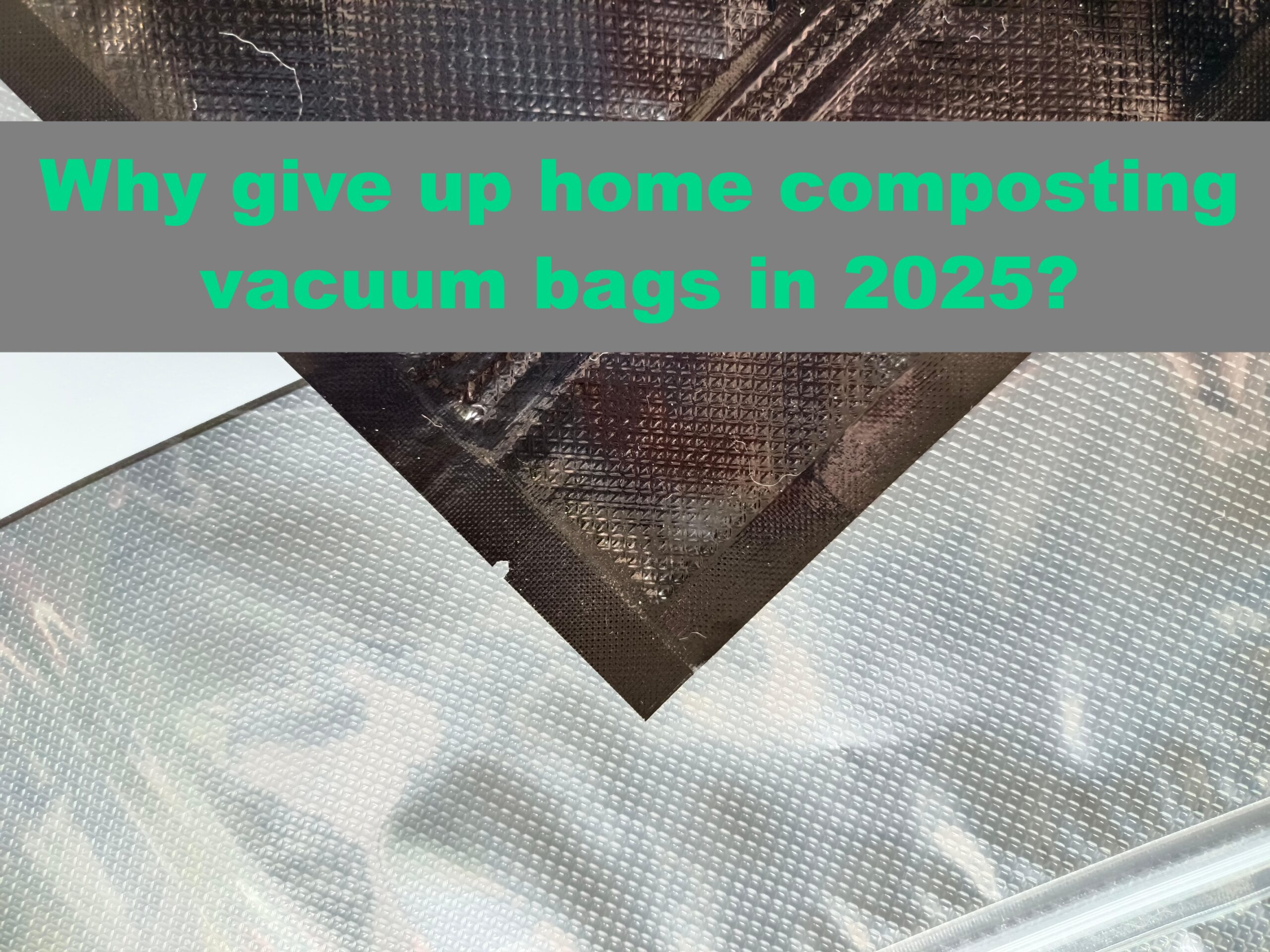I will discuss this from both a professional and commercial perspective.
1.2025 Don’t Expect Anything from Home Compostable Vacuum Bags. If you’re curious about home composting vacuum bag, read on.
2.What Type of Packaging Bag is Suitable for a Compost Bin?
3.Do Compostable Bags Decompose in a Landfill?
1.Don’t expect anything from home compostable vacuum bags
As we step into 2025, it’s becoming increasingly clear that home composting vacuum bags aren’t the best choice for eco-friendly living.
In 2024, many customers inquired about our home compostable vacuum bags. I explained that our team has secured both BPI and TUV industrial composting certifications. We have also engineered our products for home composting use. However, we are still in the process of obtaining home composting certification. As we enter 2025, the independent testing agency has notified us that extra time will be needed for the home compostability analysis, but we stay dedicated to this goal. Despite our ongoing efforts to achieve home composting certification, I suggest setting realistic expectations for home compostable vacuum bags.
Here’s why:
1. Some packaging companies have home compost certification that applies to Bio shopping bags but not to compost vacuum bags:
Why are biodegradable shopping bags capable of easily obtaining home compost certification? First, their formula is straightforward, as they are made entirely from plant starch, which degrades easily. Second, their thickness is quite thin, allowing them to pass home compost certification easily. Test results from various composting laboratories show that home compost vacuum bags with a thickness of more than 0.04 mm have not succeeded in test. Since vacuum bags are designed for puncture resistance and preservation, they must have a basic thickness of 0.07 mm. As a result, the thickness of our conventional compost vacuum bags makes it impossible for them to pass home compost certification. Even if they were to pass, they would be single-layer films and not a finished product. It’s essential to have home compost certification for finished products, isn’t it?
2. Fake Home Compost Bags:
It is possible that some manufacturers, to increase profits, add materials such as degradable cellophane, polyethylene (PE), or nylon to polylactic acid (PLA). These composite materials can appear milky white, resembling degradable vacuum bags, and can withstand high temperatures exceeding 150 degrees. They can also be steamed at low temperatures for up to 24 hours. However, do you believe this? Whether for industrial or home composting, these materials are not suitable for composting. People knowledgeable about biodegradable materials should promptly recognize the deceptive nature of these claims.
3. Concerns from Health Authorities:
In 2023, the ANSES (French National Health Security Agency) reported that although some packaging bags are labeled as biodegradable or compostable, both biological and conventional plastic bags can pose contamination risks for home or community compost systems. The agency stated, “There is no guarantee that the plastic materials they contain will completely degrade.” During a 2024 telephone interview, the New York Health Department director explained that they cannot achieve complete off-site composting quickly, particularly using conventional waste management approaches. This suggests that industrial composting is a more reliable option than home composting.
4. Many experts recommend eliminating the use of home compost liners or opting to reuse paper bags instead.

2. What kind of packaging bag do you use for a compost bin?
Typically, only municipal or commercial composting facilities can generate enough heat, moisture, and gas to achieve full decomposition. Therefore, collecting food scraps for off-site composting is not practical. If you are a consumer of composting belts or a middleman or purchaser of packaging bags, it is important to understand the municipal composting systems and private composting service agencies in various localities to verify the material used in compost bags. Recently, a new composting method called “compost burial” has emerged in the United States. This process allows for the transformation of human remains into compost, with Washington State becoming the first state to legislate the composting of human remains. Returning to the topic of home composting, kraft paper is highly suitable for use in home compost bins.
3.Do compostable vacuum bags decompose in a landfill?

For compostable vacuum bags to be a better environmental choice, they should be sent to industrial composting facilities. If they blow away, they can pollute lakes, rivers, and oceans just like single-use products do.
As we all know, biodegradable food packaging has great prospects:
What strategies can we implement to foster growth and advancement in the compostable vacuum bag industry? I will be sharing my detailed insights in the next article

